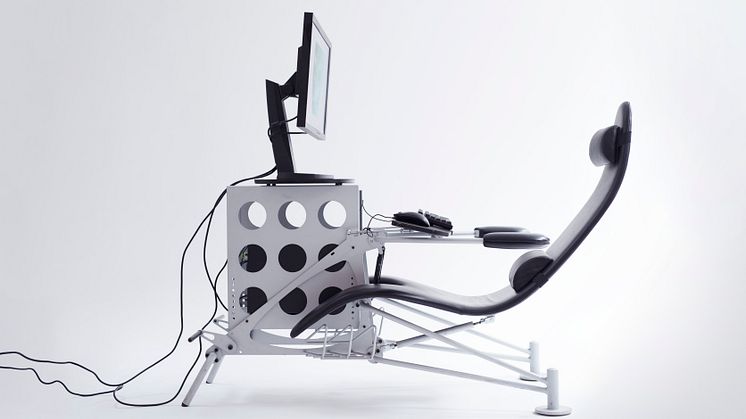
Press release -
The Snowcrash exhibition opens at Nationalmuseum on 4 May
Snowcrash began in the final years of the 20th century as an exhibition by a group of virtually unknown Finnish architects and designers, with the aim of making an impact in the international design world. They attracted quite a lot of attention in 1997 during the Milan Design Week, also known as the Milan Furniture Fair, and ended up as an international design company based in Sweden worth over a hundred million Swedish kronor. The collection, which was established over the course of 1997 to 2003, is being exhibited now for the first time.
Snowcrash (1997–2003) was founded by the Finnish architects and designers Teppo Asikainen, Ilkka Terho, Timo Salli and Ilkka Suppanen – and was established with the help of a wide circle of friends who freely moved between different artistic fields. The year after the acclaimed exhibition in Milan, the Swedish company Proventus Design purchased the Snowcrash concept. It was then developed, from an office in Stockholm, into an international design company with both Swedish and foreign architects and designers attached to it.
In addition to unique archival material, 39 works are on display in the exhibition which reflect, in various ways, a bright view of the future, where technological advances revolutionized the way of communication and living. You will find here the Globlow LED lamp (2000), an early example of an interactive LED lamp, the ergonomic computer divan Netsurfer (1995), which today can be said to be an archetype in the segment “gaming chairs,” as well as the iconic, inflatable and mobile meeting room Snowcrash Cloud (2002).
During the latter part of the 1990s, Finland and Sweden were regarded as pioneers in the development of Internet and wireless communications. The IT boom created successful companies with high levels of market capitalization and telecoms shares rose. This laid the foundation for the definition of a mobile and connected lifestyle. Snowcrash as a design collective experimented with technological hardware and software, using natural and synthetic materials and creating objects that differed from the norm at the time of Scandinavian design. Over the years, the collection of furniture, textiles and furnishings grew, based on unconventional, new ways of working and meeting. The ideas and experiments took shape as objects intended for the user in a digital age. Even back then, the collective saw how the new technology would provide the preconditions for teleworking – an everyday experience that many people recognize today.
Snowcrash was praised by critics for its visionary design, which often is described as futuristic. As a company however, the success in the media could not be turned into sales, and therefore was eventually put on hold. Without coherent documentation, Snowcrash gradually turned into a tale told in the international design world. It is not until now, when the objects and stories have been gathered in one room for the first time and the intended future has arrived, that the story can be told as a collective whole.
The Snowcrash 1997–2003 exhibitionis on display at Nationalmuseum from 4 May 2021 to 13 February 2022 (middle floor temporary exhibition space). This is an exhibition production based on a concept developed by Gustaf Kjellin and Ilkka Suppanen in joint collaboration with the Nationalmuseum.
Digital presentation for the press
Gustaf Kjellin, curator, and Ilkka Suppanen, architect, designer and one of the founders of Snowcrash, will give a digital presentation of the contents of the exhibition to the press on 3 May at 11:00 am CEST. The presentation will be conducted in English and be held via through Microsoft Teams. Please register your interest no later than 29 April by writing to press@nationalmuseum.se. Prior to the presentation, a separate e-mail containing a link will be sent to your e-mail address.
If you plan to visit the exhibition as a representative of the news media, you can either pre-reserve a ticket, or obtain a ticket directly at the museum (subject to space availability). The ticket will be valid for visits to the exhibition for an entire day. You can reserve a ticket yourself on the museum’s website under the category “Other concessions and free admission” and then show your press identification together with the ticket in the entrance ticket office on the middle floor. If you do not have a recognized press pass, please contact press@nationalmuseum.se before reserving a ticket.
For information to the press
Hanna Tottmar, Head of Press, press@nationalmuseum.se, +46 (0)8-5195 4400
Categories
Nationalmuseum is Sweden’s museum of art and design. The collections include paintings, sculpture, drawings and graphic art from the 16th century up to the beginning of the 20th century and the collection of applied art and design up to the present day. The museum building closed for renovation in 2013 and reopened in autumn 2018.

